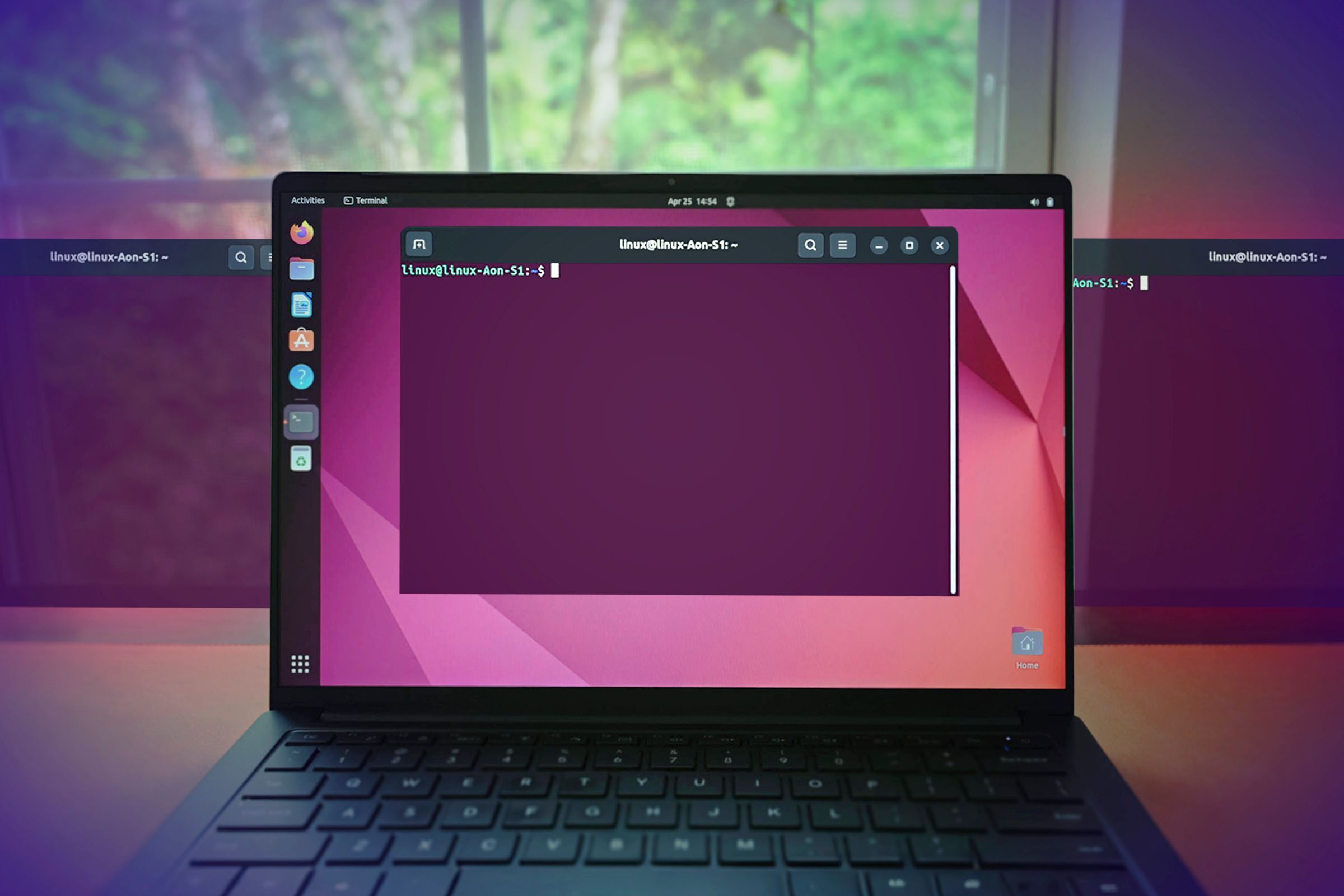
The short answer is yes. But the interesting part - and I’m talking from personal experience - is that from the moment you realize just how easy and powerful using the console is, you learn how to use it.
And it does not mean you are going to turn into a full on expert or geek, tinkering around the console. You just learn a few simple commands that enable you to do something (or somethings) quicker, easier and cleaner than going through a GUI.
Can you? Yes. Should you? No.

For many people it’s not quicker or easier. If they’ve not used CLI before, they’d need to learn multiple new things. Going to a Web browser for help every time, before doing something is not quick. Memorising precise command strings that mean nothing to the user, is not easy for many either. For them it’s bad usability.

from the moment you realize just how easy and powerful using the console is, you learn how to use it
Yes, I understand that; there is a learning curve. For some, too steep.

Agreed. I’m not super computer geeky compared to this website. A bunch of people here would probably not even consider me techy.
That said, I hated the command line and would actively avoid it as often as possible. Once I started using it (just to paste code from tutorials) and then later to cd into folders so I can run an old game .exe with WINE, and then to straight up command line tools for converting .bin and .cue files into workable ISOs (also for old games), I started seeing with the command line is so sick.
I’m converted. It’s great. It’s not as spooky as it looks. Make the background 50% transparent.

Make the background 50% transparent.
I love this little line tacked at the end of your comment. I love that this is how the terminal is no longer scary-looking.

Kinda disappointing.
The article is really trying to sell us, the reader, that using Linux without knowing how to use the command line is not only possible but totally feasible. Unfortunately, after each paragraph that expresses that sentiment we are treated to up to several paragraphs on how it’s totally easier, faster, and more powerful to do things via thé command line, and hey did you know that more people like coding on Linux than windows? Did you know you can do more powerful things with bash, awk, and sed than you ever could in a file manager?!
FFS
vimandnanoare brought up and vim’s “shortcuts” are praised… in an article on how you can totally use Linux through a gui and never need to open up the command line.Who is this written for? outside of people who not only already use Linux but are convinced that using any other OS is both a moral failing and a form of self-harm?

For clarity’s sake: I have been daily driving Linux, specifically ArchLinux, for the past 9 years, across a rotation of laptop and desktop computers. I do almost everything in the command line and prefer it that way.
I still think if you want people to try Linux you need to chill the fuck out on getting them to use the command line. At the very least, until they’re actually interested in using Linux on their own.

It is for the sake of combatting the commonly held belief that you can’t do anything without the terminal in Linux.
Progress on the accessiblility, and GUI centric applications and functionality in Linux has been huge in the last decade or two. It is now entirely possible to use a Linux system while rarely needing the terminal. And if you have someone techy helping set it up for you then it is possible to never have to.

Yes, my mom does.

Mine, too!

Yes you can but you often see the terminal used when helping people online. This is because it works across desktop environments and mostly across distros, however it does give the impression that the terminal is needed.

Even basic things in distros are quite different, for example the frontend for settings, so tech support threads will show how to do it in the backend. Oh well, but then there’s someone who suggests
sudo nano /etc/default/grubIf you’re a noob, run this and get a “nano: command not found” error, you’ll google it and learn to resolve it using
apt. However, Manjaro’s package manager ispacmanbut you don’t know, so you installaptusing a weird guide without knowing what it even is. The next update then wreaks havoc on your system.My first install ended in a dependency hell because of this.
Well no one in there right mind should use Manjaro so that was mistake no. 1

Although shaming newcomers for their distro choice is not a welcoming move 💢
True, the blame is on those who recommend it

Why, what is the problem with Manjaro in respect to other distros and would imply someone is mentally impaired to use it?

TL;DR, ddosing AUR multiple times, poorly maintained certificates, and a generally bad take on Arch that causes lots of problems for the uninitiated.
People aren’t mentally impaired because they use Manjaro. However, Manjaro is problematic as a distro and should be avoided if possible.

The recommendations seemed favorable when I tried it. I have since switched to Mint.
That’s probably for the best. If Manjaro was a little more honest and straight forward I wouldn’t have an issue. The problem is that they say they are kind ignorant of there mistakes.
Honestly they could ask for help and the community would step up.

This whole threat is a HUGE circle jerk and a collection of all the “I USE ARCH BTW” variations imaginable.
“WHY WOULDN’T ALL PEOPLE WANT THE KNOWLEDGE TO CRAFT COMMANDS TO MANIPULATE, FILTER AND SEARCH TEXT IN A WHOLE FILE SYSTEM WITH JUST ONE COMMAND? UNCULTURED PESANTS”
Come, not everyone is a computer nerd, nor everyone ones to optimize 30s in the workflow if it means memorizing a bunch of commands, their syntax and options.

I didn’t see anyone else mention this but, as someone who uses Linux Mint, if you are going to install software through the Software Manager, read the reviews for the app you want before downloading it. Linux Mint’s Software Manager is full of apps that are so outdated that some of them aren’t even compatible with the current version of Linux Mint. There are other issues as well, like how there are at least 20 different versions of Wine and most of them are very old versions. I’d understand if they want to keep legacy apps for the older, still supported, versions of Linux Mint but it can be confusing to use sometimes.

In my firs time with linux I install ubuntu (maybe 12.04, I dont’t remember, it was gnome 2) in the only PC in my parents home, I delete windows, and we was using it 2 years without knowing what is a terminal and everything went fine, the problems appeard when I was discover the terminal hahahaha

The author argues that you don’t need to use the terminal but constantly argues that you should. The average computer user doesn’t even know which version of Windows they’re using. Many don’t even know if they’re using Windows or Mac. Until Linux gets over the obsession with the terminal we’re never going to have the year of Linux.

I agree with the author then.

If you want a non-terminal os based on linux you just have to make something like android or chromeos or steamdeckos.
Those are and pretty popular, so I don’t know who can claim linux is “terminal obsessed” it’s just a kernel and there is a wide diversity of os based on it.Debian , fedora , suse etc might all be “obsessed” with the terminal.
For me that’s just the obvious economical way to offer features. decent GUI costs a lot more to develop and document - so you have to have less features for a given amount of dev time. Or you have google /valve/microsoft type amounts of resources to spend.I always thought this “year of linux” thing was a meme to make fun of canonical or idiotic tech journalists .
Is anyone realitsitcally interested in volunteering their time to win over legions of Microsoft fanboys. Fuck me sounds like hell.And frankly the use of terminal is going to be far from the first blocker to linux adoption for those who don’t even know they’re using windows or mac.
I disagree. Many people like to have control over there computer even if they don’t want to learn a bunch of new skills.
Linux isn’t for everyone but its gotten to the point where someone could figure it out if they so choose. It no longer is the unstable mess it was 10-20 years ago.

Yes. I’ve been using Ubuntu and now Kubuntu for about 12 years and I don’t use the CLI. I don’t play computer maintenance guy, so don’t need any weird hacks. I just use my applications, which all have GUIs. I don’t need the CLI despite people telling me I need to use it. They have never tried GUI only. So they don’t know what they are talking about. The next lot, who typically have no idea about usability, tell me I’m missing out on something. But it’s always something I’ve never needed. If I were to use the CLI, I would need to spend ages researching not just some command, but a whole lot of other concepts that I have no clue about, only to forget it all if I ever need that again. So not as fast as people claim. Luckily, Desktop Environment developers know this and put a lot of effort into making them user friendly. They understand usability. And that different users have different needs.

So I never planned on using the cli, but the thing is, when you’re following a tutorial — say you’re installing/configuring something new — it is so much easier to copy/paste commands than it is to read instructions and then translate them to your own particular GUI environment. Once you’ve done that a few times, you’re already one of us

It’s better to learn how to do it in your own environment, than having to learn a whole new strange environment. Especially one that is not user friendly, with poor visual feedback, intolerant of any mistype, and requiring memorising.

But the GUI also requires memorizing — often steps that are not consistent across desktop environments, or even versions of the same one! Terminal commands otoh can be noted down for later use — and the terminal remembers them. I use the GUI for some things too tbc — it depends on your use case obvs — but you don’t need to pretend the terminal is this genius-hacker level of inaccessible, because it’s really not

Memorising does not need to be precise with a GUI, as you are given visual cues and can see the next step to click. You don’t need to remember precisely every letter or it fails. You don’t even need to remember the name of an application. The desktop app launcher shows you which apps you have installed. I often pin apps to favourites as a reminder. Some Appimage apps don’t appear in the launcher. I forget I have them installed and they don’t get used.
Differences between Desktop Environments are easily found when you change. As GUIs are in many users comfort zone. We use them all the time. People know their home environment, and differences need only just that discovering. Not a whole new environment.

Yeah tbc once again I do actually use a GUI as well, I just think you’re doing yourself a disservice if you refuse to even try using the terminal, because it’s not as hard as you’re telling yourself it is. For example, typing ‘firefox’ and hitting enter is way easier than looking for the icon and clicking it. When I was first starting out with it, I mainly worked by cycling through previous commands with the up key. Then you learn about Ctrl+R and you are flying.
Again, if you don’t want to use the terminal that’s up to you, and a perfectly reasonable preference. But don’t make out that you couldn’t learn it very quickly if you wanted to, because you definitely could!

I launch favourite commands with 2 clicks. Once on the App launcher button, and once on the App itself. My hand is on the mouse anyway. So it’s fast. Way faster than typing a whole bunch of characters. For less used apps It’s 3 clicks as I’d open a category like “Media” or “Games”. And doing that, I get to see what I have in there. This builds up a picture in the users head for future use. Learning “Add to favourites” is time well spent. It can even be called “Pin to Start” or “Bookmark on Launcher” it doesn’t matter. You don’t need to memorise that exactly like the CLI. And right-clicking things is already second nature to huge numbers of users.
So I have no incentive to use text commands. It’s not faster. My hand is on the mouse for my apps anyway. And the CLI has terrible usability, via poor learnability, zero tolerance, and poor visual feedback. And completely useless for most things I do, like working with 3D models, images or drawings. I’m not a “text-worker” like IT tend to be. Plus, I want more non-IT people to use Linux, so discovering the easy ways to do things can help spread the word to them.
For me it would be like stepping off a high-speed train and walking over uneven ground instead.

Ok but if we’re talking about our own personal rigs, I launch favorite commands with one keystroke. I absolutely guarantee I can boot up my computer, navigate to whatever working directory and already have gotten to work before you’ve clicked on your second icon. But it’s different use cases isn’t it? I can definitely see how if you’re using the mouse anyway, a GUI suits you better. I work mainly with text, but so do most people, I think? It’s terms like “terrible usability” etc that I’m taking issue to here, because you’re talking out of your arse. You admit that you’ve never bothered to learn, then make sweeping proclamations as if everyone on earth uses their computer primarily for Blender

I am a gui only user. AMA. I have to use command line occasionally but it’s less than once a month, if that. Im on EndeavourOS desktop for over 2 years with Bauh managing updates. My home server runs Unraid with a web GUI interface maybe used CLI twice in 5 years? They told me Linux could be what I wanted it to be. I don’t want to use command line, so I don’t!

On the rare occasions you need to use a terminal, how often is it for something completely new? Something you need to look up to understand?
Also, how often is the MAN page enough lookup, without having to sift through 17 sites than are describing subtly different things?

I find the documentation to be very good for Arch based distros. The EOS forums or Archlinux.org wiki almost always has what I need. Otherwise the github page usually has Arch install directions that are very clear. The major things I’ve had to do in terminal is just initial set up of applications, enabling things to run on startup or changing configs. For example, and this is the most complicated example I can think of. I use grub-btrfs to put my Timeshift snapshots into the grub menu. All I really had to do was 3 commands:
sudo systemctl start grub-btrfsd
sudo systemctl enable grub-btrfsd
sudo systemctl edit --full grub-btrfsd
The first two commands start the daemon and set it to run on start up, the 3rd command is editing the config so I could use Timeshift over Snapper. Again this is the most complicated example I can think of and its 3 lines. Not only that but I was able to find documentation on two different sites. In under a minute of googling.

Endeavour is a great example for gui only users for sure.

I’m sure you could but why? Terminal is so useful. Am I out of touch?

You may be out of touch with people that are used to GUI. For example, during the first installation of linux distro after the user is landed on their DE, as far as I know, no distro ever curates the terminal to them. Like “this is the menu”, “this is the terminal emulator”, and even after the user managed to open the terminal, it is not obvious what to do next as there is only text prompt. Remember, users using GUI usually encounter text prompts with some hint (username, comment, email). Meanwhile the terminal has nothing. Suddenly you see the user you are logged in as and a blinking cursor. After that, how do you know what apps are installed? What commands can you call? Typing help doesn’t always help on every distro. Again, remember, users using GUI will see what apps are installed usually using a menu of some sort. There is a lot of friction coming from GUI if you have never encountered CLI before. Heck, I bet some people have never installed an application outside from an app store or their commissioned device. Even a file explorer concept is foreign to some.

Wack

In your opinion what makes a terminal program “more useful” than a GUI program with the exact same functionality? Genuinely curious because it’s a perspective I cannot wrap my brain around lol

It has always just felt a lot faster than navigating through a GUI. I suppose at the end of the day this is entirely dependant on how well designed the GUI is. Should I type in one command I have memorized or navigate through multiple sub pages?
It is also just what I am used to maybe

I see. For me, the step of memorization is time-consuming, especially for a program I only need on rare occasions and for simple tasks.

Simple example: installing stuff. Much faster and simpler to type “install foo” in cli than open a gui, searching for it, finding the right one, clicking install.
Same for updating: it takes me 2s to type the command to update all packages, that’s less than the time I need to move my mouse to the icon of the package manager.
- refalo ( @refalo@programming.dev ) 2•4 months ago
Most people on this planet simply do not care. They don’t want to learn terminal and you cannot change their minds. But they still need a desktop OS that works, so we have to give it to them unless you want everyone to stay on Windows forever.
Only 5-8% of the population is even tech-savvy.

I’ve tried to run Ubuntu, mint, Debian, and couple other distros without the terminal to see if I can actually recommend it to non-geeks. And every time, I conclude I can’t because the fucking “software center” (or whatever it’s called) is always garbage, and it’s easier to just use apt.
The only time I’ll recommend Linux to a non-tech person is when the hardware is so old that it would just be junked without Linux.

Not sure if Bauh is available for Debian and it’s derivatives, but it’s an amazing software center. If anything, use synaptic on Debian. It’s much better than any software center there.

And apt is just the beginning of it. It’s not that uncommon for apt to not work either.

Specially when it’s hijacked to run other things instead (cough cough snaps).

Based on my experience, I think you can. Many distros nowadays offer ways to do things without the use of the terminal. In Linux Mint, for example, you can rely solely on the Update Manager to update all installed applications and modules rather than using the terminal. You can also uninstall apps by right-clicking on them in the Menu and selecting the uninstall option. And finally, if you want to move files around, even to some locations that require root, you can do that using the File Explorer app (e.g. Nemo).
That being said, when I started on my Linux journey, I made it a point to actually learn some terminal commands, because I saw it as an important feature in Linux and a good skill to possess.

I can’t personally, but I’ve installed/set up Linux systems for quite a lot of older people, and I think only one of them ever uses the terminal for anything. The rest just… use the computer.
On the whole, they’re pretty much just using Libreoffice, Firefox and a few other bits these days. If something needs the terminal to fix, we’re already past the point where they’ve phoned me to pop round and fix it.
These used to be Ubuntu systems, but I switched them all to Mint after having endless Snap permission problems with printers, USB sticks and other peripherals. Once up and running, it’s pretty low maintenance.
I guess they don’t need to use the terminal, because I’ll go and do it if it’s necessary - but we are looking at once every few years. Not a lot of tech support needed.
On my own machine, I probably use the terminal every day.
Interestingly enough, Xfce4 has a kiosk mode. You could build a custom desktop for them and restrict changes. You then could do mass updates with Ansible or Saltstack

It’s a good plan for a more professional setup, but in this distinctly unprofessional setup, if I did it remotely, I wouldn’t get my chat and a cup of tea and biscuit :)


